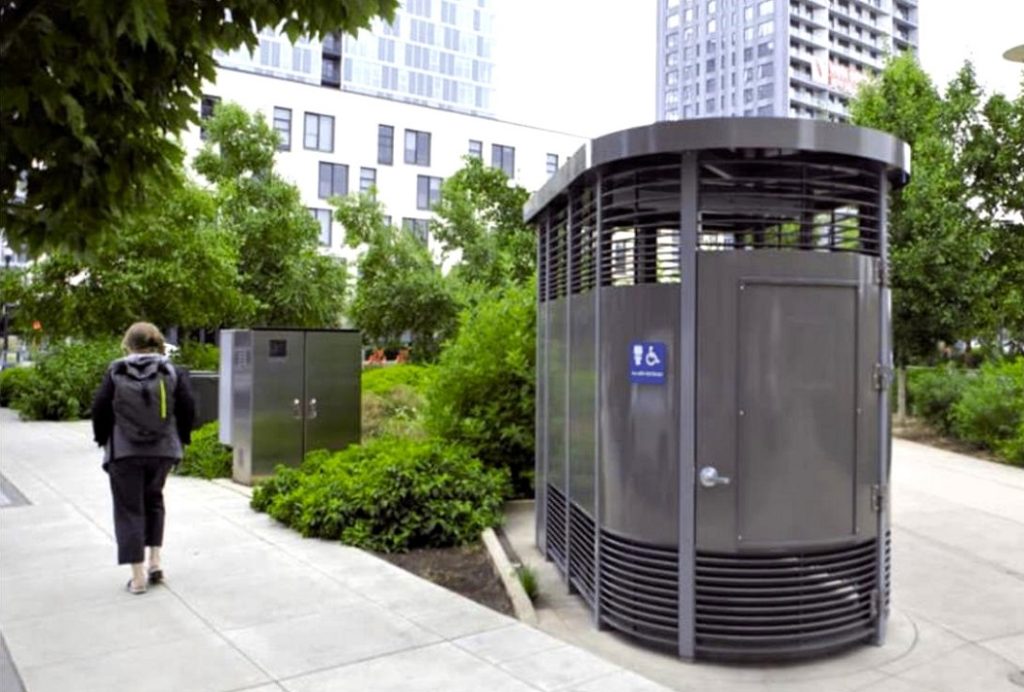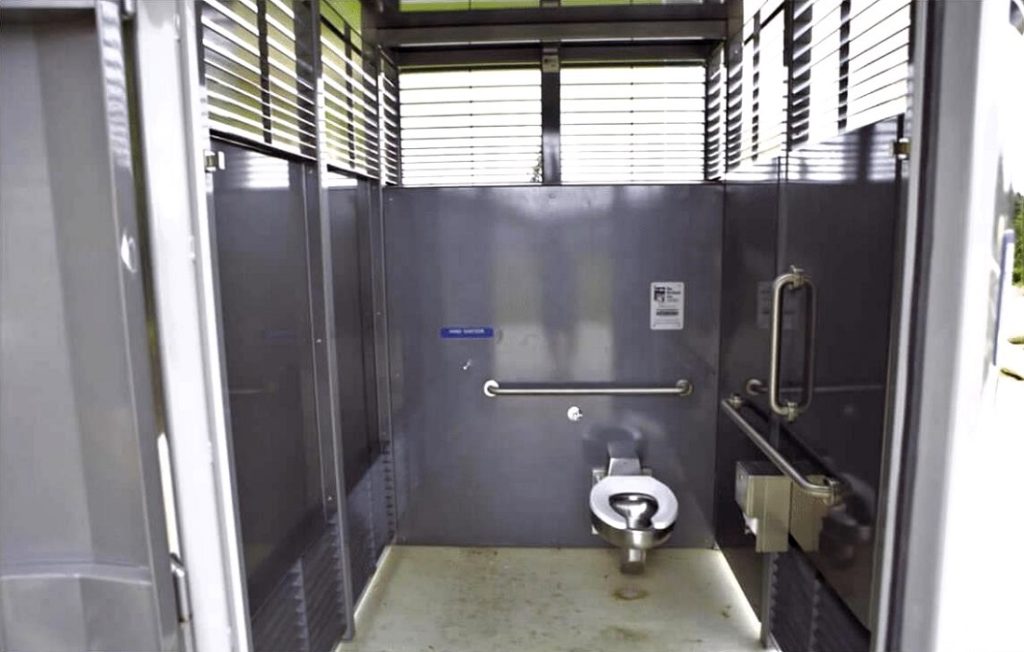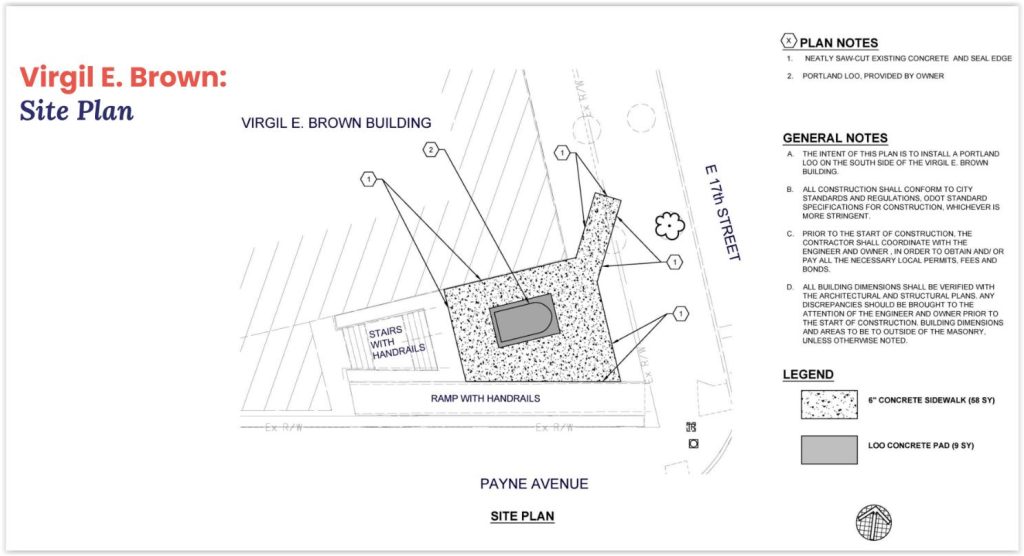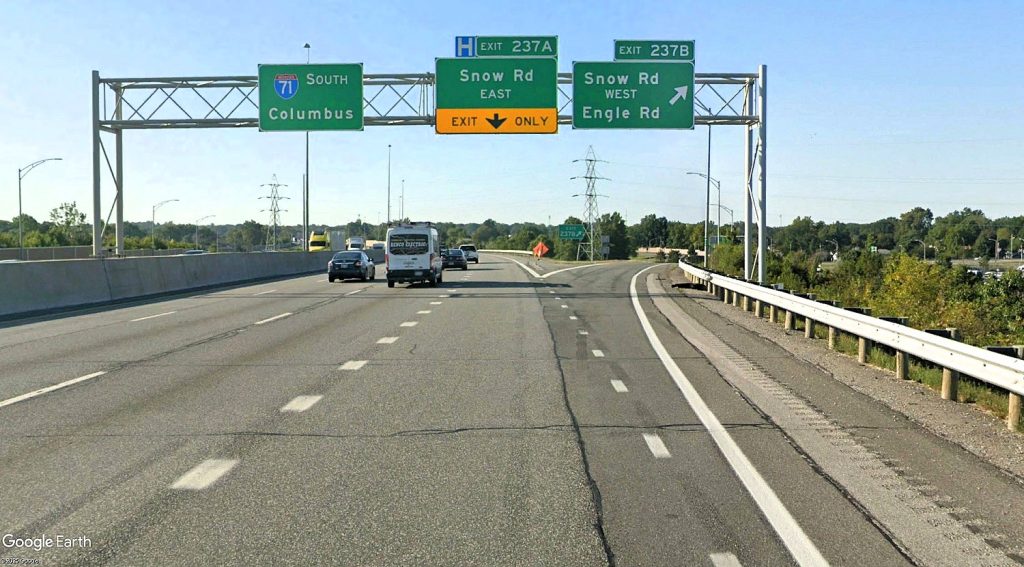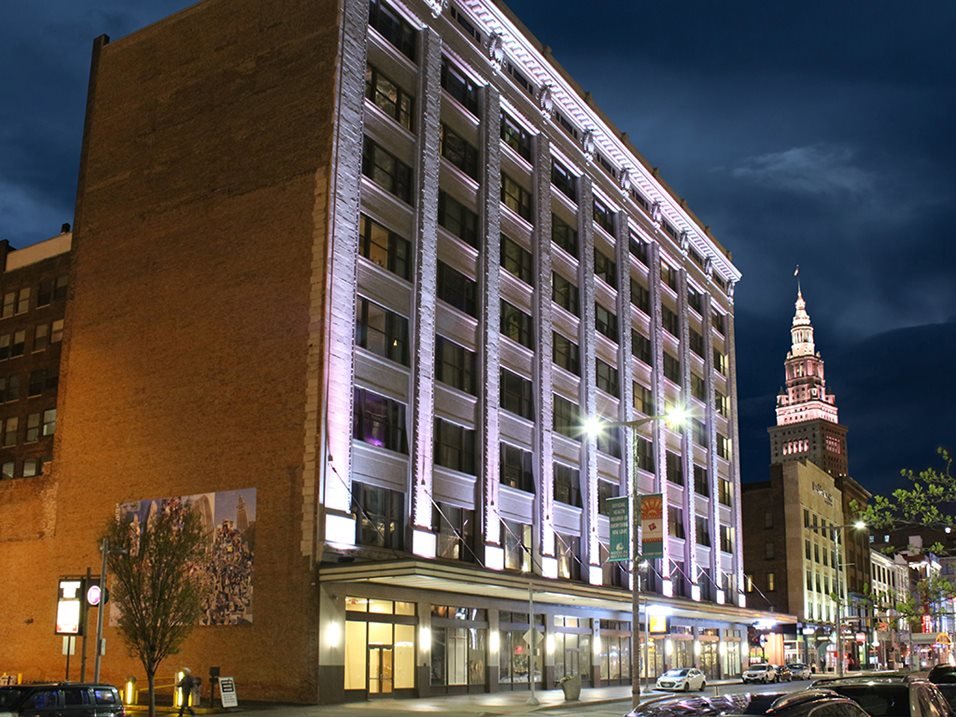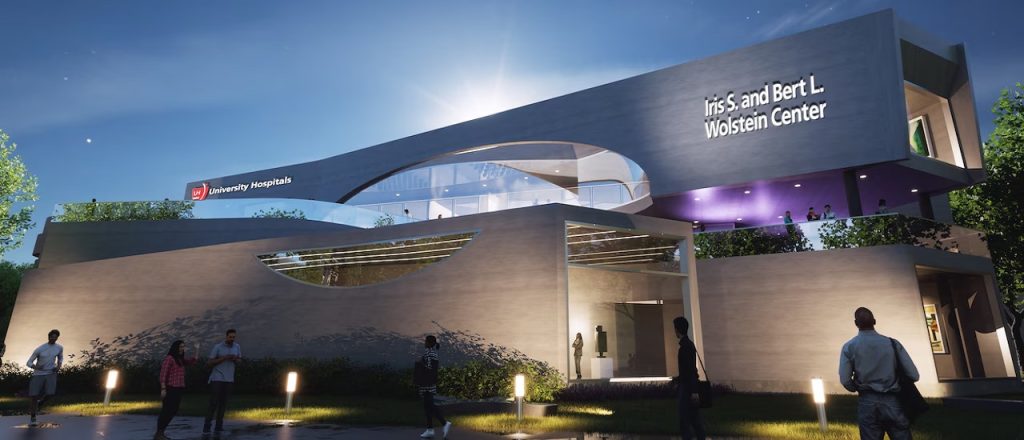Planning Commission to review sites this week
Public bathrooms are exactly what many civic and business people say Downtown Cleveland needs. But where they should be located has been a difficult question to answer. It’s one of the reasons why it has taken three years to advance three proposed locations for four of these public potties for consideration to the City Planning Commission’s Design Review Committee this Friday.
Although public bathrooms are often associated with providing some human dignity to those who are homeless, the need for these facilities can affect everyone. Not only do they help keep downtown cleaner, but in the urban core where many people are walking, riding bicycles and taking public transportation, public bathrooms make it easier for those who don’t have a car available to travel miles to answer nature’s call.
So Cuyahoga County and the city of Cleveland will be installing and maintaining these bathrooms. The county will install one at the corner of Payne Avenue and East 17th Street in front of the Virgil E. Brown Neighborhood Family Services Center. This facility will be closest to the expanding men’s and women’s homeless shelters on Payne and Lakeside avenues and nearby homeless camps.
The city will install another at Perk Plaza on East 12th Street, between Chester and Walnut avenues. Although the public bathroom’s exact location in the park is not identified in presentation materials submitted to Planning Commission members yesterday.
Two more public bathrooms will be located at the new Canal Basin Park on Flats East Bank, between and below the Detroit-Superior Bridge and the Greater Cleveland Regional Transit Authority viaduct. Plans for the new park are becoming more specific although a construction start date for the park hasn’t been announced.
Hours of operation for the public restrooms are proposed to be from 8 a.m. to 10 p.m. in the summer (April 15-Oct. 15) and from 8 a.m. to 7 p.m. in the winter (Oct. 15-April 15). The facilities are to be cleaned three times a day Monday-Saturday and twice each Sunday, according to a proposed schedule. The county will clean its own restroom while the city would “work with partners” on the cleaning.
The locations were chosen based on need, safety, available utilities and long-term maintenance factors. Facilities will be placed in a highly visible, well-lit and populated area that will serve many residents with diverse needs.
To avoid driving up installation costs, restrooms will be installed near water and sewer lines. And the locations were chosen because there is a partner in the area that was willing to take on the long-term maintenance of the public bathroom.
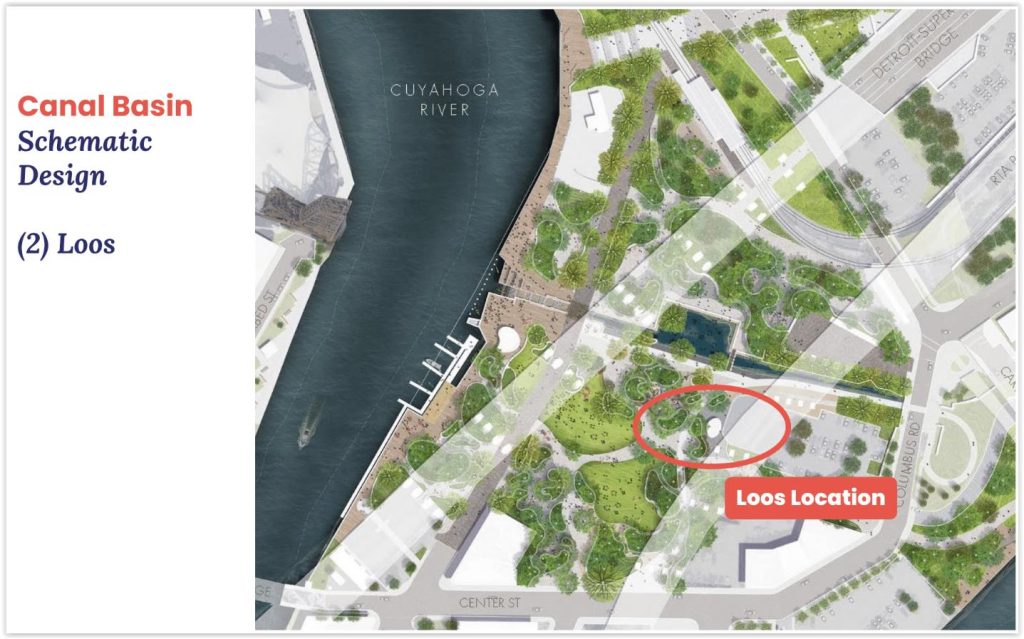
Two public bathrooms are proposed at Canal Basin Park, the plans for which are becoming increasingly detailed but no construction work for the park has been announced. This site was chosen because it is at the north end of the Towpath Trail and near services for homeless people just across the Cuyahoga River at St. Malachi (City of Cleveland).
“Our ability to respond to a universal biological need is a basic human right,” noted Mayor Justin Bibb’s administration in its presentation to the Planning Commission. “Everyone deserves to have access to a toilet without question or purchase.”
Mark Lammon is executive director of Campus District Inc., overseeing the east side of downtown where Cleveland’s largest homeless shelters and several growing homeless camps are located. He said he was grateful that his nonprofit development corporation received a $650,816 grant from the Cleveland Foundation in 2021 to help launch the project. Also supporting the project are Downtown Cleveland Inc. and Ohio City Inc.
“As a community we’ve debated public restrooms for a long time,” Lammon said. “During COVID we test-piloted Porta-Johns in various locations and we had no issues. It’s time to install proper facilities for the dignity of everyone in our city.”
The grant was awarded “to support the installation, fees and maintenance of a network of high-quality permanent public restrooms throughout Downtown and Ohio City for use by individuals experiencing homelessness, as well as the general public.” The funding came from the foundation’s Greater Cleveland COVID-19 Rapid Response Fund from which $19 million of giving was supported by many donors.
Officials chose for Cleveland’s facilities The Portland Loo — a nationally and internationally used public restroom that focuses on access, safety and durability. It is a freestanding, gender-neutral, handicap-accessible public restroom facility.
It got its name because it was designed in Portland, OR in response to increased homelessness in the wake of the 2008 recession. The facility was designed to seamlessly integrate into its surrounding environment, Cleveland city officials said.
They also said it is easy to maintain, energy efficient, and adaptable to cold weather. It costs less than a Port-A-Potty to maintain and can sustain a daily volume of usage comparable to airport restrooms. The Portland Loo currently operates in more than 90 locations in 20 cities across the US.
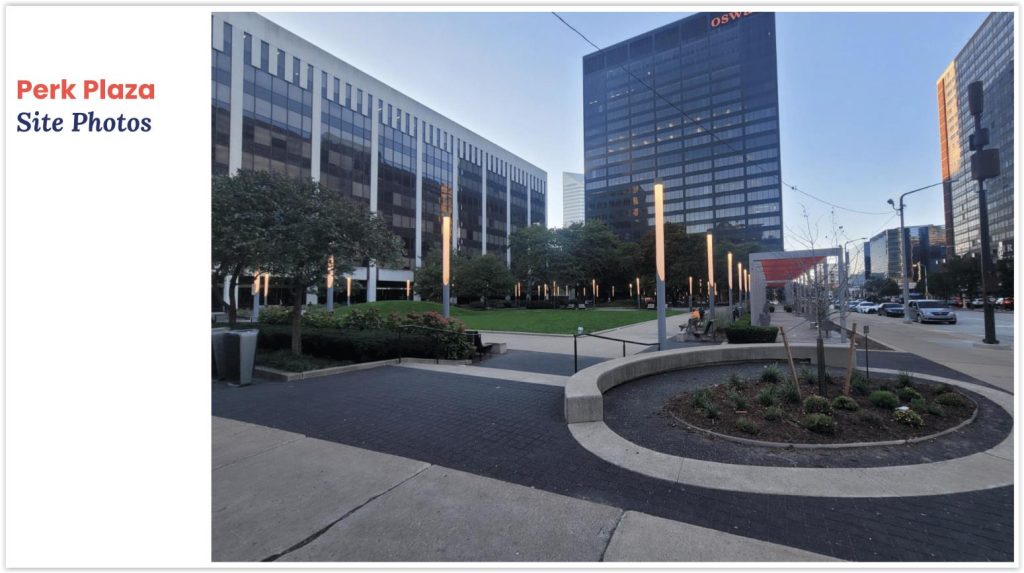
In contrast to the county’s location, the least specific plan for a public restroom is the proposed Perk Plaza site on East 12th Street, between Chester and Walnut avenues. Several corners of the park were shown as possible sites in a city presentation, including this one which was originally designed to have an info/vendor kiosk built here (City of Cleveland).
The Portland Loos are made of stainless steel with anti-graffiti finishes. Their open bottom and tops allow sight lines and sounds to carry outside the restrooms while maintaining privacy. They also have an exterior handwashing station, built-in hose and cleaning cabinet and are able to function year-round.
Portland Loos cost about $175,000 each or $700,000 for four; remaining capital, operating and maintenance costs will be funded by the city, county and the three affected development corporations. But the complicated excavation and installation of the same type of public restroom in Downtown Columbus drove up the cost to $700,000 each, or more than the typical cost of a two-bedroom Downtown Cleveland condo.
Also, Columbus experienced that the touted “year-round” functionality was not exactly true. The toilet bowls iced-up during severe cold spells, despite the units being purchased with a “winterization package.” But Columbus officials said other cold-climate cities haven’t had this problem. A solution was designed which involves improvements to the water heating system to keep warm water circulating through the toilet, preventing freezing.
END

